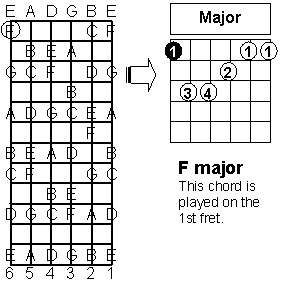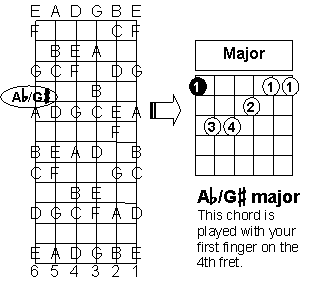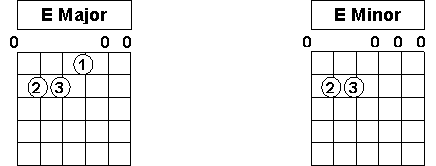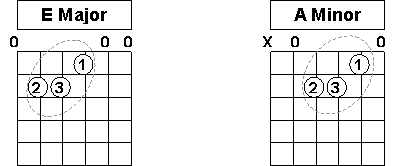If you’ve been playing the guitar for a few months or longer, here is a technique that will help you to learn new guitar chords faster.
When you work on memorizing a new guitar chord fingering you should see if you already know a chord that uses a similar shape or identical fingering. This will make memorization easier because you are linking the new chord with something you already know. You should also look for subtle fingering changes when you compare one chord to another.
Learn chords quicker and easier by comparing the new chord to chords you already know. Identify identical fingerings, similar or identical chord shapes, and look for subtle fingering changes.
Take a look at the E major and A minor chords shown below:
As you can see, E major and A minor both use identical fingers. Fingers 2-3-1 are found on strings 5-4-3 in the E major chord. In the A minor chord, fingers 2-3-1 are simply shifted down one string each to strings 4-3-2. In other words, the exact same shape is used but it is used on different strings. The sixth string is played in E major but is not included in the voicing for A minor. Now look at the F major and Ab major chords that follow:
As you can see, both of these chord fingerings are identical except that they are played on different frets.
Now look at the difference between E major and E minor. Notice that the only difference is that you take the first finger off of the E major chord to produce E minor.
So instead of having to start from scratch when you learn a new chord, remember to look for similarities with chords you already know.
Okay, so why don’t you grab a good guitar chord book right now and decide on a new chord you are going to learn. Once you’ve picked the chord you want to learn, apply this finger memory technique. I’m sure you will find that you will learn the new chord much faster.












